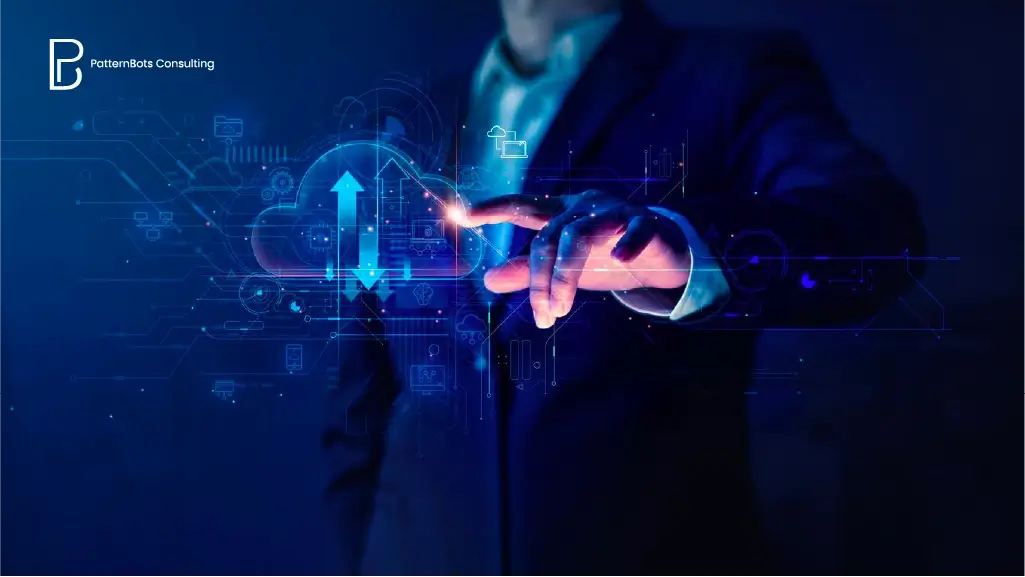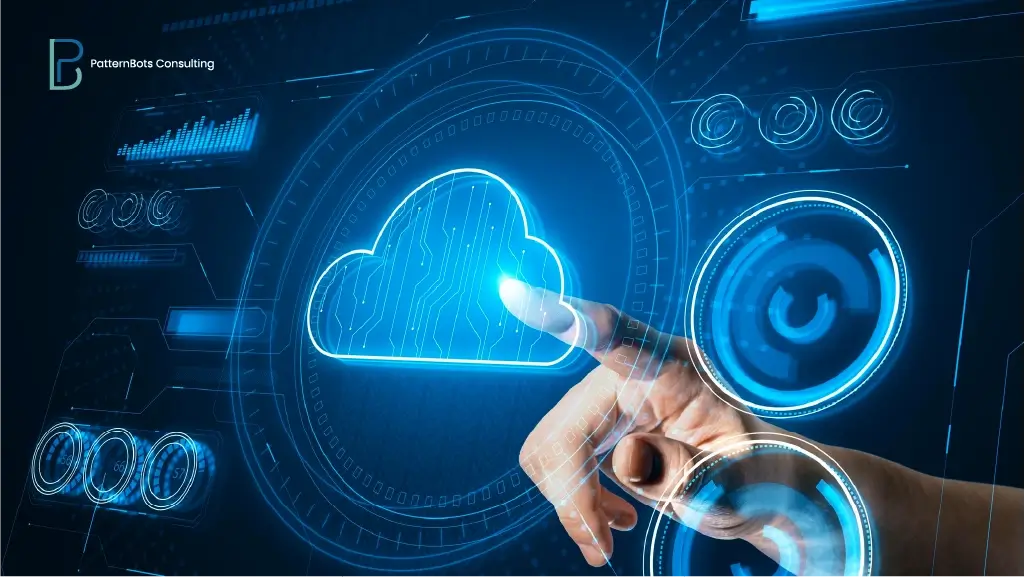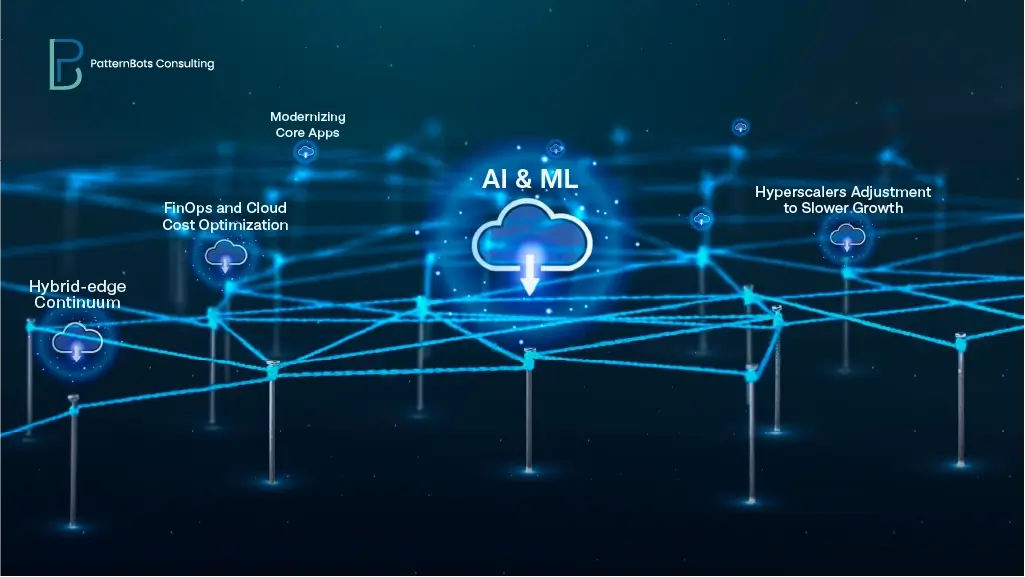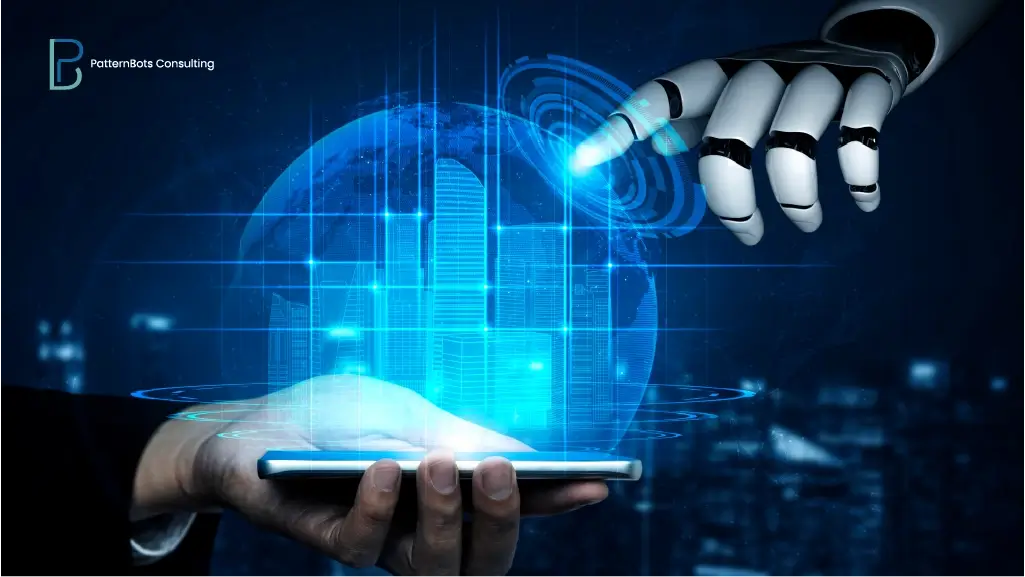
Highlight of Cloud Computing Solutions in 2023 have become a crucial driving force for change across industries. This year, we’re witnessing the merging of advanced technologies, with Artificial Intelligence (AI) and Machine Learning (ML) playing a central role in reshaping how businesses use data-driven insights.
Additionally, the shift towards a multi-cloud hybrid-edge setup is transforming how infrastructure is approached, emphasizing efficiency and real-time analytics.
We’ll be learning more about the cloud computing trends later in the blog; let’s cover the basics first.
What is Cloud Computing?
Cloud computing is a virtual machine technology that enables its users to develop, configure, and customize applications through an internet connection. Cloud technology encompasses a development platform, database, software application, and a hard disk. It is capable of performing various functions like:
- Development of applications and services
- Provides virtual storage space, back-up, and recovers data
- Hosts websites and blogs
- On-demand Software Delivery
- Data Analysis
- Audio/Video streaming
What are Cloud Computing Solutions?

Cloud Computing Solutions is a range of services, resources, and technologies that are delivered to the users by cloud service providers through the internet. These solutions are catered to businesses and individuals to utilize computing resources without the requirement of external hardware. The users are provided with flexible cloud computing solutions such as on-demand access to various tools, resources, storage, networking, etc.
Some of the features of cloud computing solutions are as follows-
- On-Demand Self-Service
- Broad Network Access
- Resource Pooling
- Rapid Elasticity
- Measured Service
Cloud computing solutions come with three main service models, namely, infrastructure as a Service (IaaS), Platform as a Service(Paas), and Software as a Service (SaaS).
- Infrastructure as a Service (IaaS) offers virtualized computing resources like virtual machines, storage, and networking. Users have control over the operating system and applications deployed on these resources.
- Platform as a Service (PaaS) provides users with a platform that includes infrastructure and a runtime environment for developing, deploying, and managing applications. Users focus on coding and application development without addressing the underlying infrastructure.
- Software as a Service (SaaS) delivers fully operative subscription-based software applications over the internet. Users are allowed access and use of the software without worrying about maintenance and infrastructure.
Latest Cloud Computing Trends 2023

Cloud Computing is raging globally, and a massive number of businesses, including start-ups, are opting for cloud computing services to streamline their operations. Let’s have a look at what the cloud computing trends of 2023 are:
Cloud Computing Trends 2023 – Artificial Intelligence (AI) and Machine Learning (ML):
Though AI and ML were developed 50 years ago, software developers have been aggressively using the two elements for the past two decades. Businesses are optimizing artificial intelligence or machine learning to derive insights from datasets, improve decision making and streamline or automate complex processes.
These technologies analytically track patterns and generate data analysis reports that can improve customer experiences and reshape business processes. As companies invest in AI and ML research, the focus extends beyond mere implementation. It encompasses ethical considerations, transparency, and responsible AI practices. This ensures that these technologies continue to evolve and positively impact society.
2023 Trends of Cloud Computing – Modernizing Core Apps:
The migration of core applications to cloud environments is becoming a strategic imperative for businesses. Modernizing these applications offers scalability, agility, and cost-efficiency. By rearchitecting or restructuring legacy systems, companies can unlock the full potential of cloud-native features, like- microservices, containerization, and serverless computing.
This transition enhances performance, reduces downtime, and streamlines maintenance. However, challenges like data migration, compatibility, and security must be navigated effectively to ensure a seamless and secure transition to the cloud.
Cloud Computing Trends in 2023 – Leveraging Multi Cloud Hybrid-edge Continuum:
The “Multi Cloud Hybrid-edge Continuum” is a dynamic and integrated computing approach that spreads across various cloud environments, hybrid setups, and edge locations. Organizations distribute workloads, apps, and data across public/private clouds, on-premises infrastructure, and edge devices for optimal performance and responsiveness.
It adapts to workload changes, manages data flow efficiently, and balances central and edge computing, meeting modern demands. This complex landscape enhances resilience, data control, and real-time analytics, requiring strong management, data orchestration, and security solutions across environments. Hence, businesses are leveraging the multi-cloud hybrid-edge continuum for its numerous benefits.
What’s Trending in Cloud Computing 2023 – FinOps and Cloud Cost Optimization:
Financial Operations (FinOps) methodologies are gaining prominence in 2023. These methodologies allow businesses to leverage cloud spending, allocate resources effectively, and align IT expenses with business goals.
FinOps teams use automation, analytics, and usage insights to find ways to save money, cut unnecessary costs, and bring more clarity to finances. This trend is crucial for making sure cloud resources grow sustainably, getting the most out of cloud investments, and keeping a close watch on expenses.
Latest Cloud Computing Trend 2023 – Hyperscalers Adjustment to Slower Growth:
The big cloud companies that led the cloud revolution are now moving into a steadier growth phase. Though they are still growing and expanding their businesses, they’re growing slower than they earlier did. These companies have shifted focus towards working on making their services better, improving customer experiences, and entering new markets and industries.
As competition gets more challenging, these companies stand out by offering specific services, solutions for different industries, and combinations of cloud options. This helps them meet changing customer needs and stay important in a changing cloud environment.
How Big is The Cloud Computing Market in 2023?

From where we see it, the cloud computing market is becoming huge. According to the report from globenewswire.com, the global cloud computing market was worth USD 546.1 billion in 2022 and will grow to approximately USD 2,321 billion in 2032, at a CAGR of 16% by the end of the forecast period.
Conclusion
The latest trends and reports show us that cloud computing solutions will continue to keep growing at an exponential rate. The development of AI & ML can be forecasted to simplify further or maybe even automate the entire business process. The rise of FinOps will further help businesses optimize their costs and improve business operations accordingly. As for the hyperscaling industries, they have started to come to a saturation point and slowing down on their growth.
However the trends may evolve, we can be sure that new industries like EV Charging will take charge and become the new hyper scalers until they reach a saturation level. Technology is evolving so fast that it now makes us wonder if we are coming close to the point where all changes will hit a saturation point too.
Related Blogs –
Top 6 Cloud Migration Challenges & Solutions
Key Benefits For Small And Medium Businesses Moving To Public Cloud